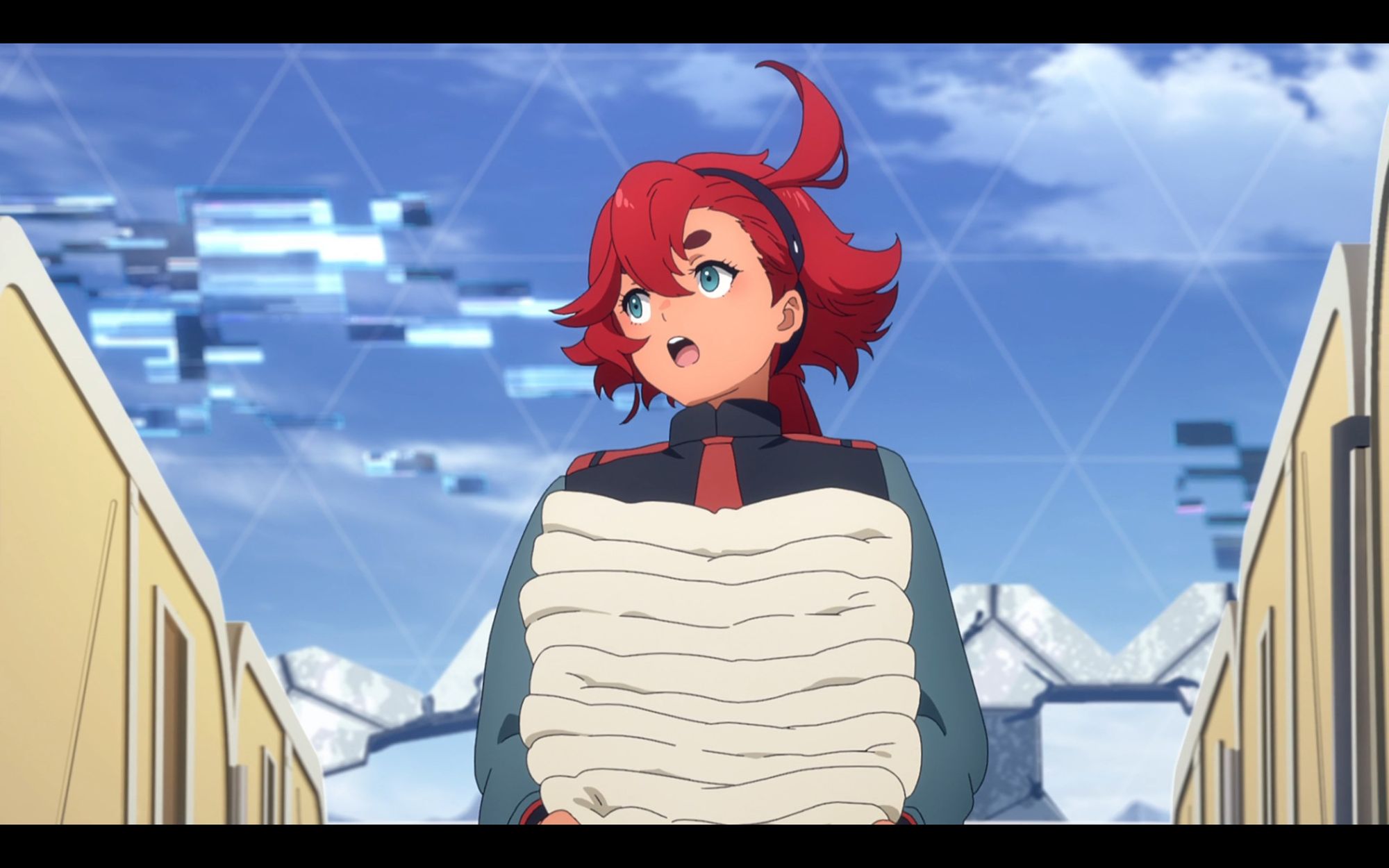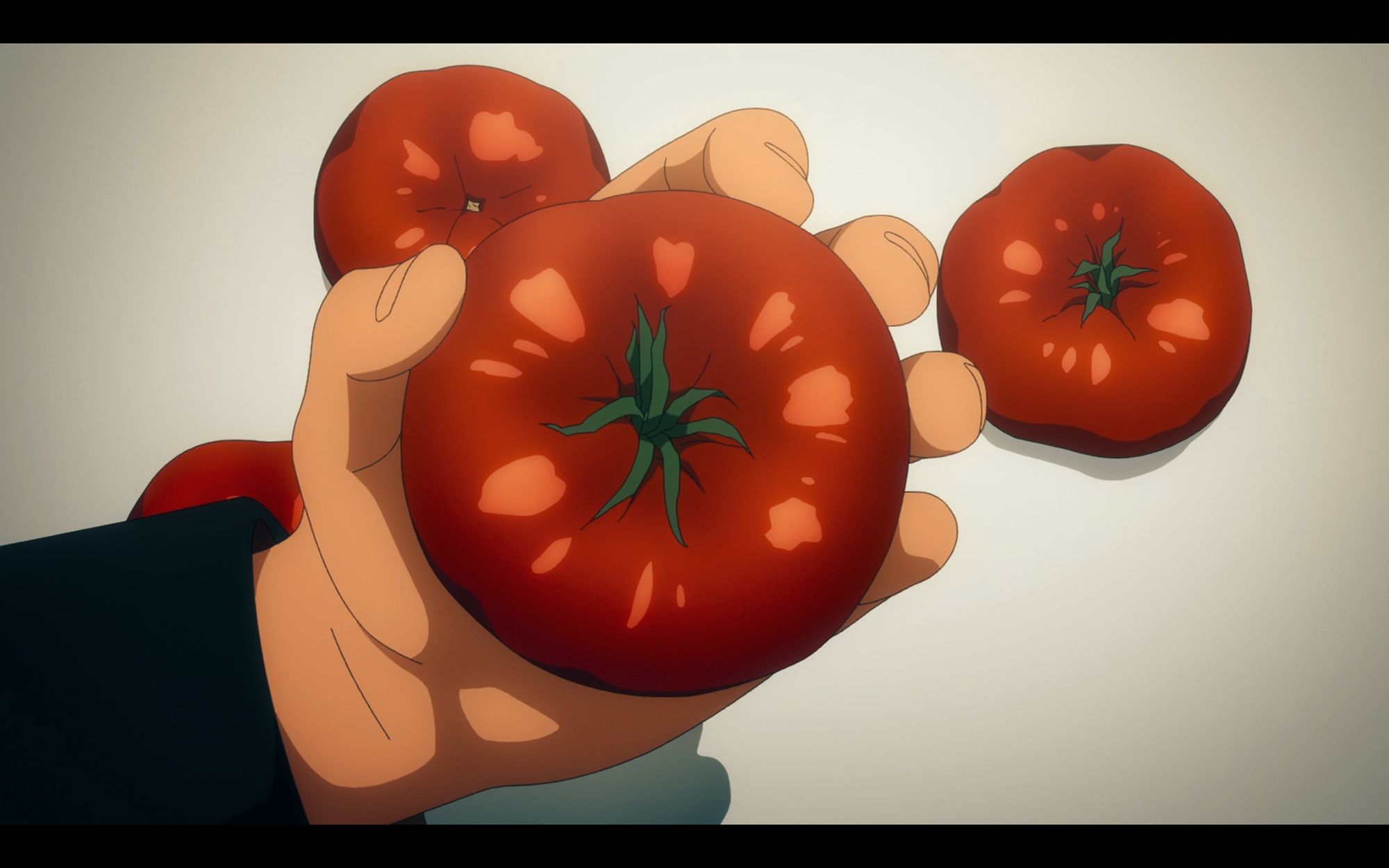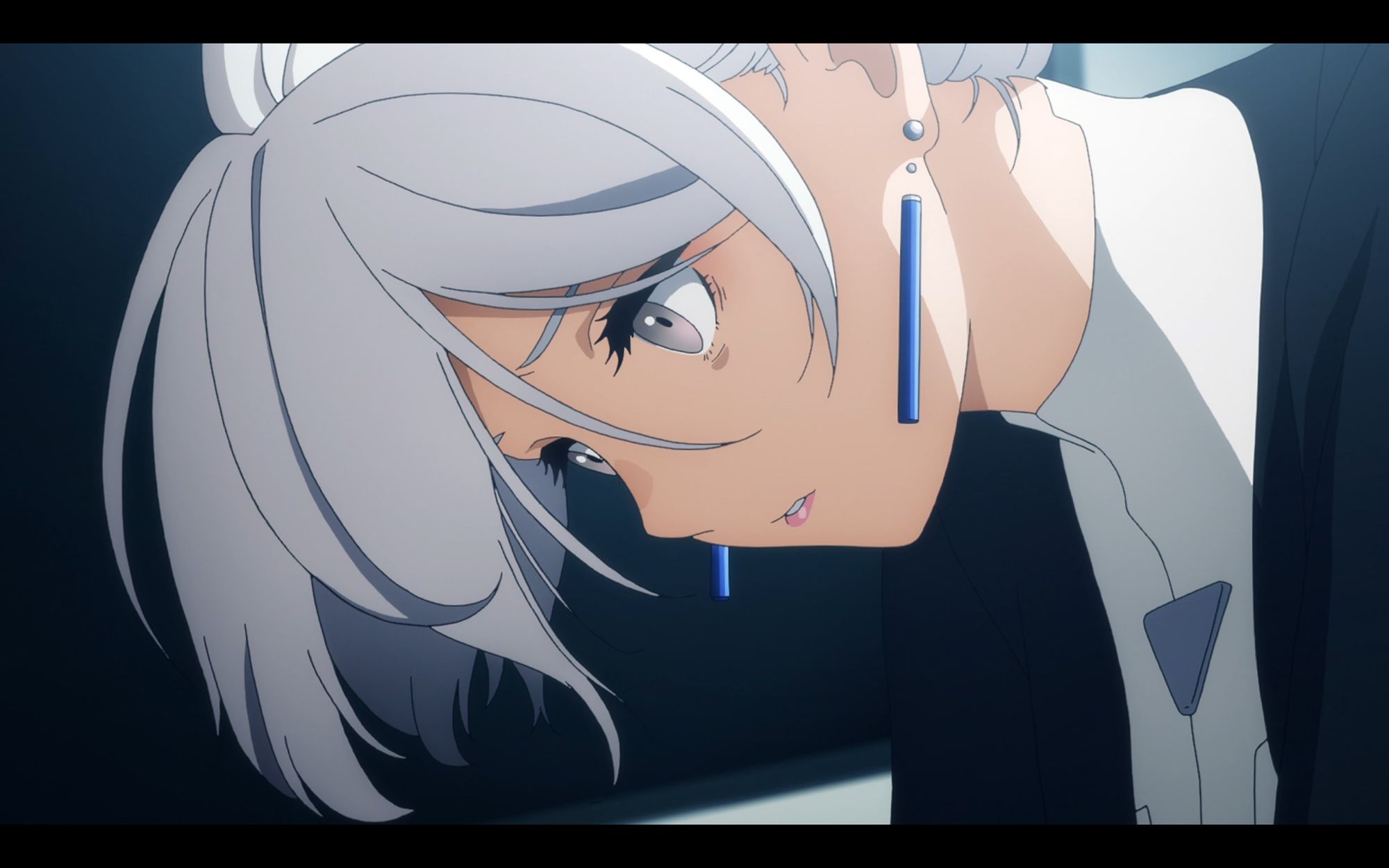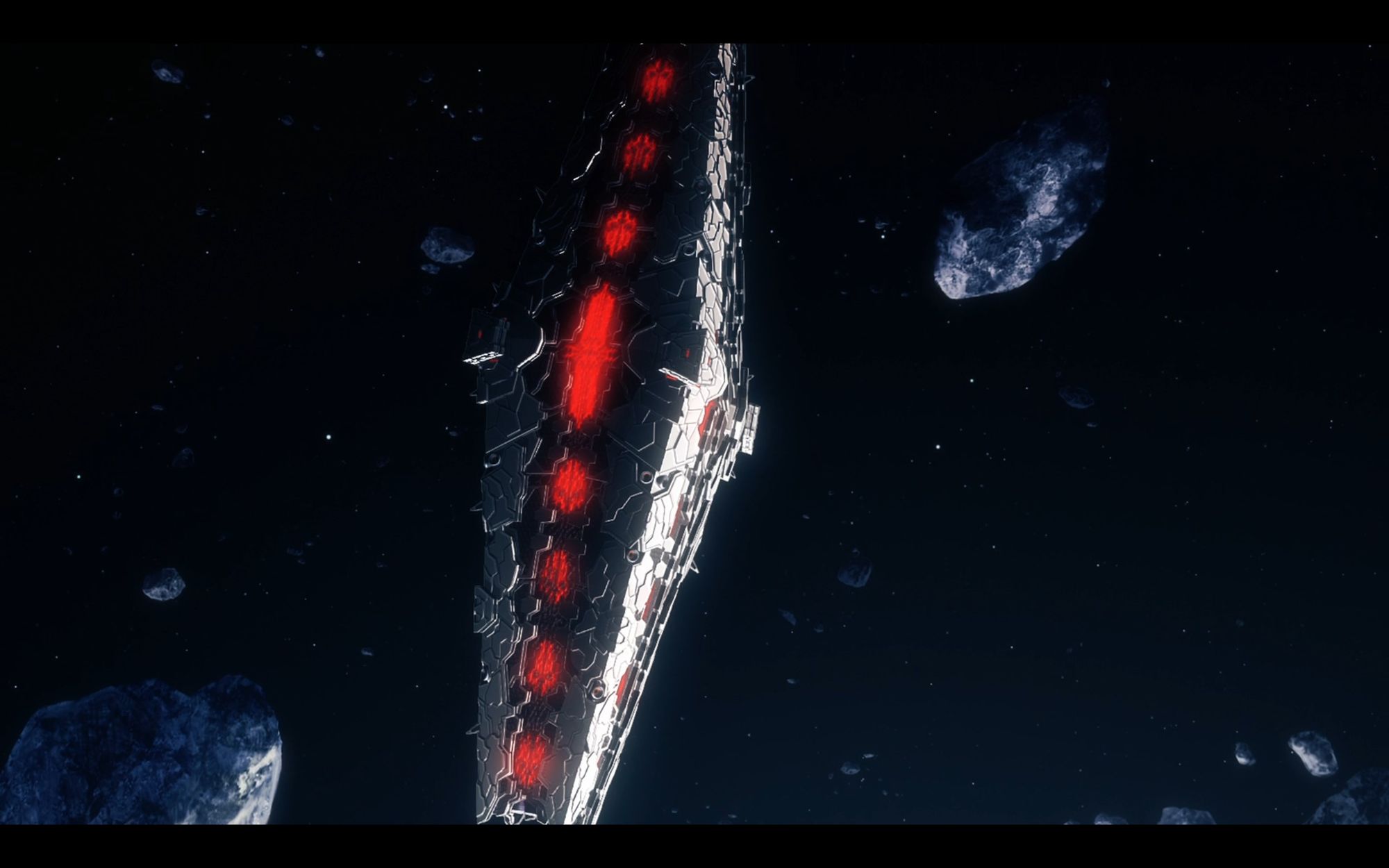Mobile Suit Gundam: The Witch From Mercury Decides "What We Can Do Now"
No matter how popular this series is, no matter how much fanart continues to be drawn, Suletta’s story ends in a month.

Welcome to this week’s installment of ANIWIRE! This time, we are covering the 21st episode of Mobile Suit Gundam: The Witch From Mercury, the hit new Gundam series. This piece assumes that you have been keeping up with the show so far, so bear in mind that there will be spoilers.
Before that, though, here’s the news from the past week.
News
- Viz announced several new manga licenses for 2024, including a new Taiyo Matsumoto comic. I’m also intrigued by Steel of the Celestial Shadows, a series by Daruma Matsuura. But the most exciting announcement of all is the English release of My Name is Shingo, a truly bonkers series by horror legend Kazuo Umezz.
- Henry Thurlow, the director of episode 1066 of the One Piece anime, is possibly the very first non-Japanese episode director in the history of the series (or perhaps Toei Animation itself.) Foreign animators like Vincent Chansard have distinguished themselves in past One Piece episodes, so it’s great to see a director in the spotlight as well!
- The fallout from Oshi no Ko’s sixth episode continues: a storyline that drew on a real-life suicide for inspiration, was criticized by the victim’s mother and then provoked an internet backlash by angry anime fans, earned a complaint in the Broadcasting Ethics & Program Improvement Organization per Anime News Network. A messy story all around.
- Artists who worked on Spider-Man: Across the Spider-Verse are sharing their work following the film’s release in theaters. Lots of great stuff here!
- The artist of Vinland Saga, Makoto Yukimura, is coming to San Diego Comic Con 2023.
Bookmarks
Here’s some great pieces other folks have written from the past week if you’re looking for something to read.
- For Anime Feminist, Josephine Bowman wrote about the refreshing Shonen Jump series Akane-banashi.
- Over on This Week in Anime, Nick and Steve did a great job summing up the charms of my personal fave Skip and Loafer. I really need to write about this series…
- Daniel Dockery rode the Spider-Wave to profile the 1978 Spider-Man tokusatsu drama. It’s the only Spider-Man series where the hero rides a giant robot…but there’s more to it than that!
- At The Verge, Charles Pulliam-Moore wrote about how Spider-Man: Across the Spider-Verse incorporates distrust of Miles Morales by the comics old guard into its narrative.
- At Polygon, Diego Nicolás Argüello wrote about how the story of Miles Morales, while done justice in the Spider-Verse films, deserves better than to be repackaged and resold by the Hollywood superhero blockbuster complex.
AMV of the Week
This is a video about Sasuke. Courtesy of sasaina-san.
Now, to the episode coverage. There will be spoilers after this point.

We’re barrelling towards the endgame of Mobile Suit Gundam: The Witch From Mercury. Suletta confesses everything to her friends. Miorine grapples with the responsibility of running the Benerit Group. Lady Prospera and Eri/Aerial begin the first stage of their master plan, announcing their presence to the solar system. Asticassia School of Technology has been destroyed, and the future of Earth depends on the actions of Suletta and her friends. While earlier episodes entertained the notion that Witch From Mercury had more stories to tell, this episode makes it clear: the show has three episodes left. No matter how popular this series is, no matter how much fanart continues to be drawn, Suletta’s story ends in a month.
There’s something sad about anime endings, even the good ones. The beginning of a series brings with it the spirit of possibility, the promise that just about anything could happen. As each episode airs, the range of possibility narrows. The show develops a beginning, a middle and an end. Sometimes that ending is powerful enough that it reconfigures the entire series. At other times, it poisons the material such that even happy memories of earlier episodes rot away. Sooner or later Witch From Mercury will be “solved,” transformed from a living production into a complete object. At that point, perhaps, we’ll understand what place the series occupies within the Gundam franchise and whether it is the start of a new age or the last gasp of the old. Until then, Suletta Sundays continue. Let’s discuss.

There are two aspects of this episode that I found to be particularly successful. The first is Suletta’s continued development. After being broken in the 18th episode and coming out of her funk at the end of the 19th, she commits to helping her classmates in the 20th even after enduring great trauma. The 21st sees her in full rescue mode, distributing blankets and tomatoes to the exhausted students of Asticassia. Suletta is no longer doing this work because Miorine or her mother are commanding her to do so. Instead, she is doing this work because she believes that it is the right thing to do.
Suletta may no longer have access to the Aerial, but she does have the presence of mind to track down refrigerated tomatoes that survived the destruction of Miorine’s greenhouses. This immediately makes her stronger and more capable than any mobile suit pilot that remains in this setting. Gundam is a franchise after all that ended its first series with a sword duel between two pilots after the decapitation of their robots. Military technology is nothing compared to human endurance. This was a theme last week, but I’m glad to see that this episode continued to develop it. It’s a reminder that Witch From Mercury is successful not just because it adapts memories of past successes, but because it retains their core message.

The second is how the episode pays off the generational gap between the students and adults in this setting. Belmeria returns alongside agent Guston Parche to convince Suletta to get back into the robot. Belmeria does her best to convince Suletta that she might be the only one able to reason with her mother. But then Nika rightly asks: well, isn’t Belmeria just doing to Suletta what she has done to Elan Ceres’s many doppelgangers? Belmeria can only admit that, yes, Suletta is just one of many child soldiers that she has sent off to die in order to save her own skin. She’s reduced to kneeling on the floor, begging the younger generation to forgive her.
I’ve found Belmeria to be a compelling character because despite being aware of hypocrisy, she’s incapable of changing her ways. Other adult characters like Lady Prospera or Delling Rembram act in order to achieve their ambitions, or at least what they consider the greater good. They do not regret. Only Belmeria cannot bear the consequences of her crimes even as she commits them again and again. She’s the worst of the adults but perhaps the only one able to relate directly to the children. She knows in her bones what they’ve lost because of adults like her.
Another adult, Sarius, is given a notable moment in this episode. Sarius was introduced as the most straight-laced of Delling’s allies. He’s a true believer whose trust in the rightness of the Benerit Group’s brand of hyper-capitalistic war profiteering is repulsive. Yet he’s also the one who offers Miorine a way out by advising that she blame Grassley for the recent chaos. Keeping the Benerit Group around, he believes, will save more lives than maintaining Grassley's reputation. Miorine turns him down though. Like many of her generation, she’s tired of sacrificing others for her own gain.

Just like last episode, Miorine is the character that I’m most unsure of here. She’s spent the last season buffeted around by people older and nastier than her. Prospera appears to have moved on from torturing her, although it’s possible this could change in the coming episodes. Miorine’s experiences, at the very least, have taught her that running a corporation like the Benerit Group is challenging. No matter how hard she strives to make capitalism work for ordinary people, her “allies” find new ways to hurt those people for their short-term profit. I don’t know if Witch From Mercury will end with a reformed Benerit Group, a dissolved Benerit Group or a Benerit Group that’s essentially the same as it was. Perhaps the show’s conclusion, as I’ve feared from the start, may be “solving inequality is too hard.” I don’t expect the show to parrot my own beliefs. But I do think that Miorine’s choices in the last three episodes will be crucial to understanding how, exactly, the show sees its young audience.
“What We Do Now” shows us Quiet Zero for the first time. It’s a big ominous spacecraft that, as fans have pointed out, bears some resemblance to Anthy’s coffin at the climax of Revolutionary Girl Utena. I like that Aerial uses Quiet Zero to fight in the same way that she did in the dueling arena, just on a larger scale: commanding armies of gund-bits instead of individual drones, for instance. She neutralizes the entirety of the Space Assembly League’s army as easily as if she were tearing one of Guel’s hapless robots into little pieces.

If I have a complaint, it’s that the Space Assembly League was so easily defeated, and destroyed at that. Wouldn’t it have been far more threatening if Aerial added every single Space Assembly League ship and mobile suit to her personal army? Of course, the abrupt removal of a faction from the board fits with the rollercoaster pacing that makes scriptwriter Ichiro Okouchi’s shows enjoyable to watch. To me though, it also makes the world seem smaller. The original Mobile Suit Gundam became as big as it was because it gave its grunt robots the same love and respect as the Gundam itself. Witch from Mercury has demonstrated this capability in some respects but not in others.
The series continues to struggle, visually. We’re given many poorly drawn distance shots in this episode of characters talking to one another with no framing or camera movement. Background art remains flat save for some memorable images of a wrecked Asticassia. The big robot fight in this episode is pretty cursory, although considering how thoroughly the Space League Assembly is defeated it makes sense to conserve resources for the last three episodes. Hopefully the animators and staff will be able to hold the show together in the final stretch. I don’t yet know if Witch From Mercury will stick the landing, but I’m still invested in Suletta’s journey towards self-sufficiency. Will we see Miorine be given more to do? Will Chuchu punch Guel’s annoying brother Lauda in the face? Who can say! The end is in sight, and all bets are off.

This week’s addendum
The Suletta and Petra Power Hour: I let out a sigh of relief this episode when it was revealed that Petra was alive, but in critical medical care. Looks like GUND-ARM Inc.’s medical technology will be useful after all!
The Robot Corner: This episode saw the introduction of the mysterious Calibarn, a Vanadis prototype that Suletta may ride to the final battle. We don’t know much about it, but I think it’s funny that Witch From Mercury introduced another reference to “The Tempest” in its final act.
The Shakespeare Corner: You could even argue that Quiet Zero and Aerial’s “data storm” is itself a Tempest. Well played, folks! (It also reminds me of Yuri Bear Storm’s “Invisible Storm.”)
Grassley House Watch: I liked that Shaddiq’s aides continue to do their thing even though they’re in jail. These kids are tough.
Elan Watch: He’s back! I still think his sudden change of heart is abrupt, but I did enjoy seeing him sit outside with the animals, listening to Belmeria’s sobbing.
Friends of Gundam: More Gundam fan art. Only a few weeks left! It’s almost Miover!


